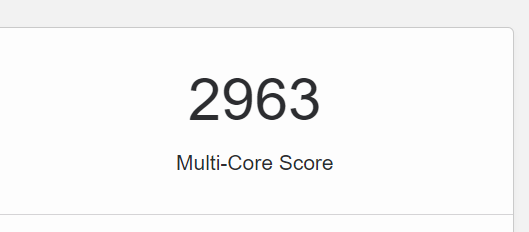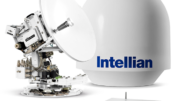There’s an app called Geekbench which works on practically every PC, Mac, and phone. It provides a good apples-to-apples comparison of the basic processor power of pretty much, well, anything.
Here’s what they report:
This is the Geekbench score of the processor in the latest iPhone 15 Pro, according to CPU-monkey.com:

Here’s the score of a laptop with an eighth generation Core i5 chip, courtesy of Geekbench.com. This chip was considered an average workhorse for office and productivity tasks in 2018.

With a score of 5868, the iPhone handily beats the laptop with a score of 2963. As I said, there’s a lot more to the speed of a computer than just processor speed but it’s one measurement.
I bring all this up because if you are largely happy with the power of a 5-year-old laptop, and you probably are, then you should be able to use your phone for all the same tasks.
Why aren’t there phone/desktop hybrids?
Several companies over the years have created phones that fit into a docking station. At that point the idea was to connect a monitor and keyboard and have a full PC. For the most part these have failed because the phone wasn’t capable of running desktop software. But today that’s no excuse. A phone has plenty of power and storage, and you can do a lot just with cloud-based apps. So what’s the excuse?
I would love to have one device that has all my data locally, runs the apps I want to run, and can fit in my pocket. The technology is certainly there to do it. So why isn’t there such a thing?
Well, there kind of is
If you have a Chromebook or recent iPad, you’re essentially using phone-level hardware and running PC-level apps. Both devices use a combination of cloud apps and local apps to give you a pretty darn powerful experience. I’ve used both for days at a time while my PC was being upgraded or repaired, and it works. The only thing is that neither of these are pocketable. Still, as a combination of tablet and productivity device they aren’t bad.
Microsoft’s own Surface Pro is another combination device that can be easily brought from place to place. It’s a full-fledged PC so you don’t sacrifice anything. But again it doesn’t fit in a pocket.
USB-C is so flexible that it’s not like you would need to add extra hardware to make all of this work. So I guess there’s only one reason why you can’t have a phone that is also your work PC.
Don’t tell me it’s all about power management
The standard trope here is that PCs have crummy power management so battery life would be terrible on a PC/phone hybrid. Except I don’t buy it. Intel and ARM make really good processors that sip power and run Windows. As I said, the latest iPad already runs on a desktop processor and it gets all-day battery life even with a giant screen. So it isn’t about power management. Maybe it was at one point, but not anymore.
I must be the only one who wants it
The truth is that it would be so easy to craft a phone that could be used as a laptop, that the only possible answer is that no one really wants it. No one but me, of course. It wouldn’t be hard to create a PC-based phone since Windows 11 can run Android apps, so it could run as an Android phone when you were carrying it and as a PC when you weren’t. It’s even easier in the Apple ecosystem. Apple’s latest laptops can run iOS apps and Apple’s latest iPad runs the iPadOS on a desktop processor. You can’t tell me that Apple couldn’t take the next step if they wanted to.
Wouldn’t you rather buy one device for $1,000 rather than buying two? Wouldn’t it be nice to have it all integrated into one personal device that worked great on the desktop and also in a restaurant? So why can’t we all just get what we want? You tell me. Leave a comment below and explain to me what I’m missing.





